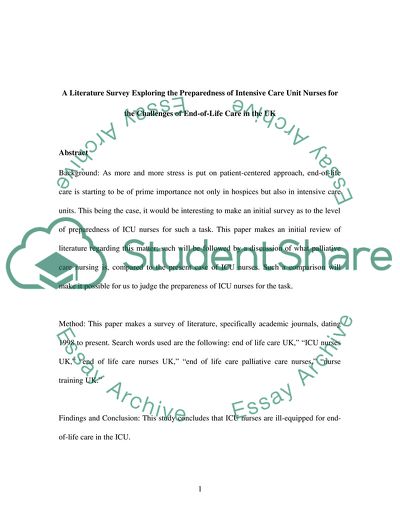Cite this document
(“Preparedness of Intensive Care Unit Nurses Case Study”, n.d.)
Preparedness of Intensive Care Unit Nurses Case Study. Retrieved from https://studentshare.org/nursing/1704031-literature-review-to-explore-whether-intensive-care-unit-icu-nurses-are-prepared-enough-for-the-challenges-of-end-of-life-care-in-the-united-kingdom
Preparedness of Intensive Care Unit Nurses Case Study. Retrieved from https://studentshare.org/nursing/1704031-literature-review-to-explore-whether-intensive-care-unit-icu-nurses-are-prepared-enough-for-the-challenges-of-end-of-life-care-in-the-united-kingdom
(Preparedness of Intensive Care Unit Nurses Case Study)
Preparedness of Intensive Care Unit Nurses Case Study. https://studentshare.org/nursing/1704031-literature-review-to-explore-whether-intensive-care-unit-icu-nurses-are-prepared-enough-for-the-challenges-of-end-of-life-care-in-the-united-kingdom.
Preparedness of Intensive Care Unit Nurses Case Study. https://studentshare.org/nursing/1704031-literature-review-to-explore-whether-intensive-care-unit-icu-nurses-are-prepared-enough-for-the-challenges-of-end-of-life-care-in-the-united-kingdom.
“Preparedness of Intensive Care Unit Nurses Case Study”, n.d. https://studentshare.org/nursing/1704031-literature-review-to-explore-whether-intensive-care-unit-icu-nurses-are-prepared-enough-for-the-challenges-of-end-of-life-care-in-the-united-kingdom.


